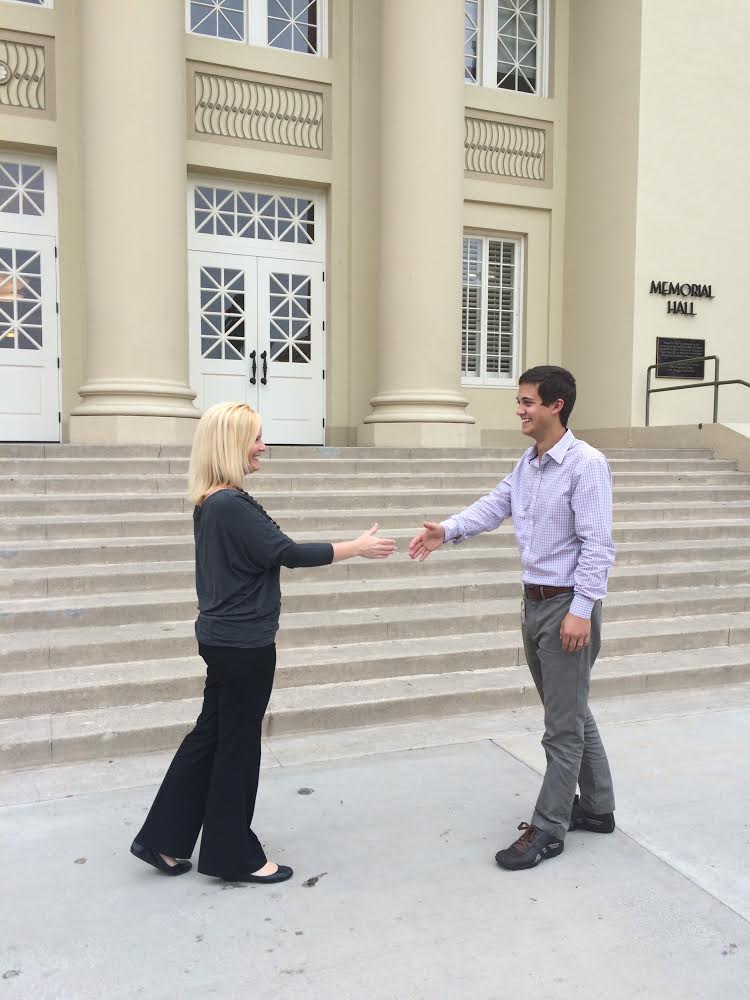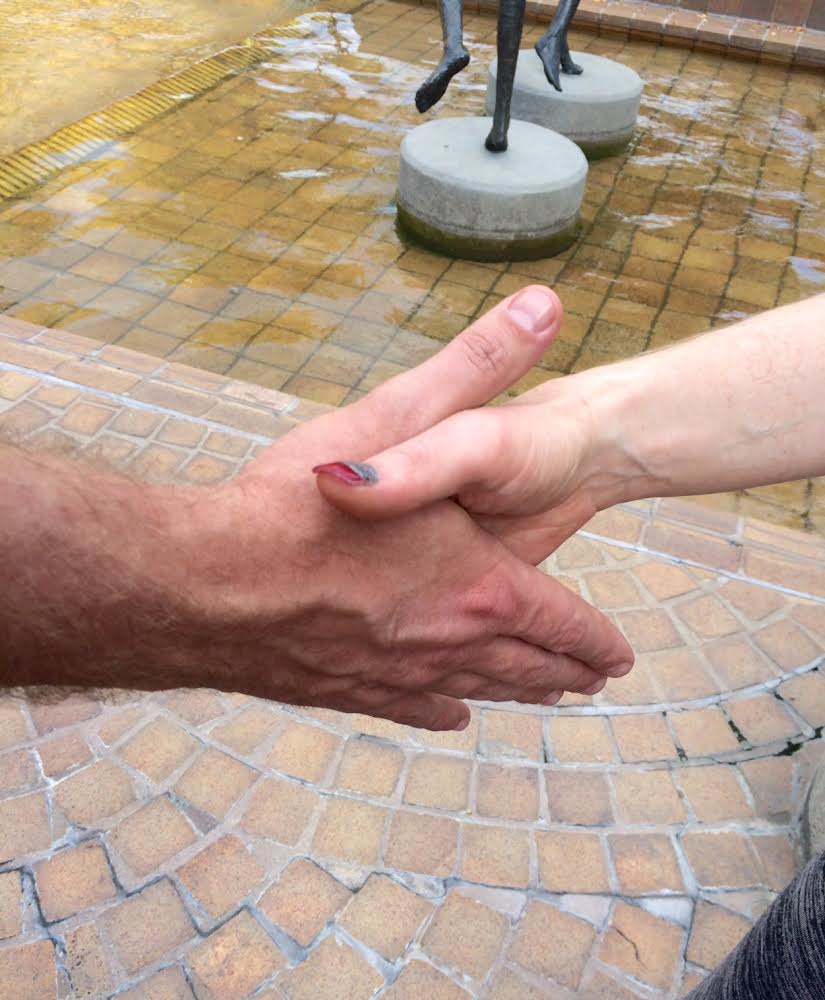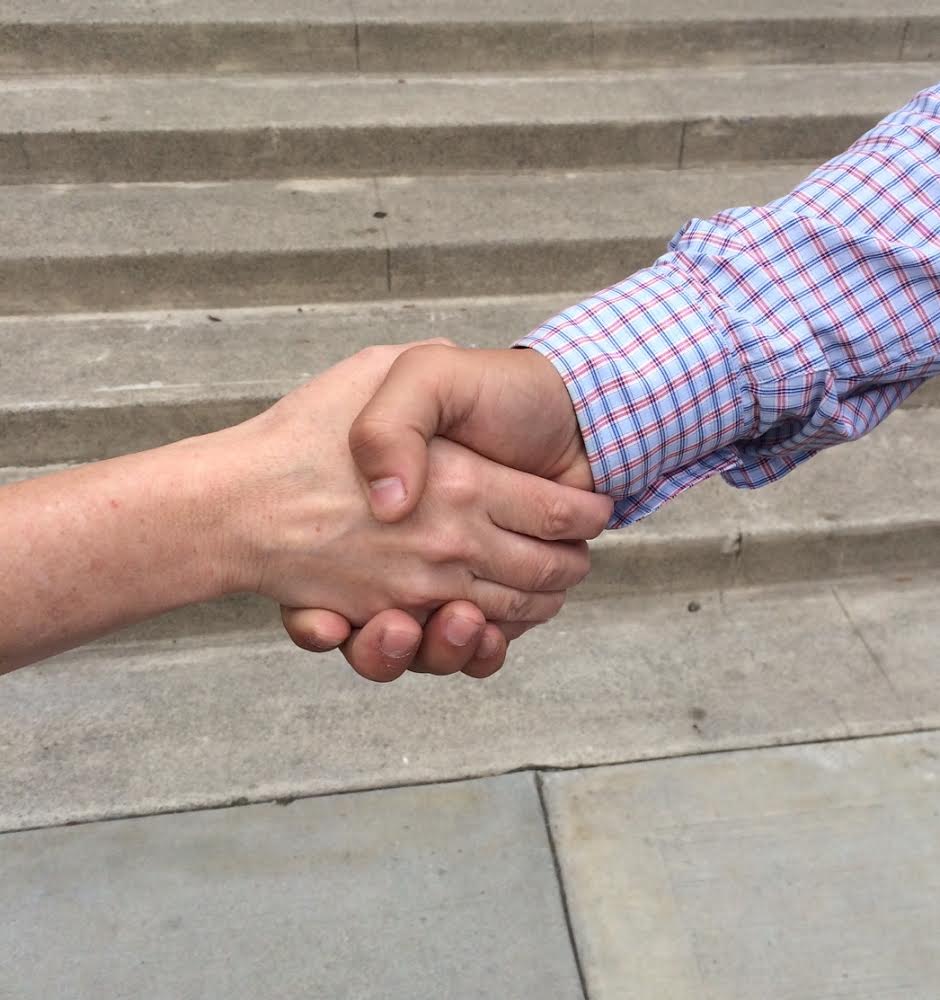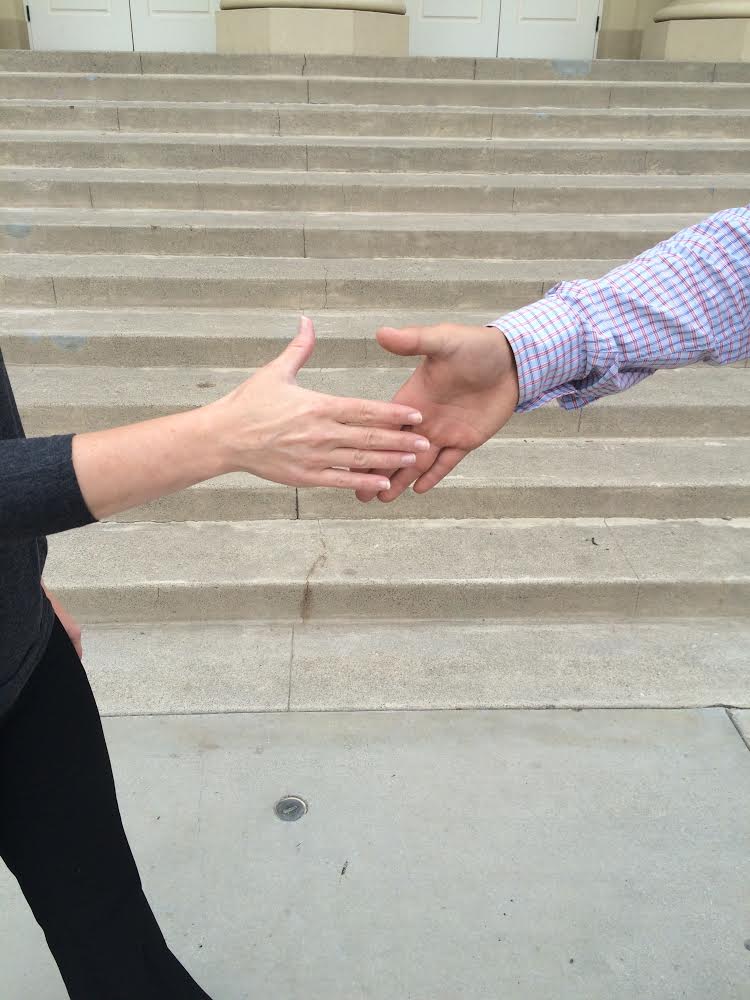The Art of the Handshake

The handshake has been around for centuries and sends a variety of messages:
- "It's a pleasure to meet you."
- "Hello."
- "You can trust me."
- "We're in business."
With so many things to say, it's important to know how to shake hands properly. For if performed incorrectly, it may be hard to forget. Now, don't panic!
Learning the art of the handshake is so easy you'll no doubt realize how close you are to perfection. The aim is to be experienced as assertive, rather than passive or aggressive.
Three Phases of an Effective Handshake
|
The Reach You'll hardly notice it happening, but the "web-touch" is where the true handshake begins! If the web-touch doesn't occur, a great handshake is very unlikely! |
|
The Clasp The clasp is the heart of the handshake. |
 |
|
The Shake Move your hands up and down a couple of times (no more than three), then release. Often you will be speaking to the person at the same time. Eyes connect until the handshake ends. |
 |
The first two steps are worth special attention - it can be awkward if your hands don't meet correctly during the reach, or if you try to complete the clasp without making simultaneous eye contact.
Don't leave a bad impression. Have you ever shook hands with someone who had the "dead fish" syndrome or with someone who must have thought that "firm" meant a bone-crushing grip?
It Takes Practice
A lighthearted review of what not to do when shaking hands.
Get comfortable with your handshake by practicing with everyone you can. Seek feedback from close friends, fellow students, and family members. It is fun to practice the steps in slow motion, not stopping until you each agree that you've got it down correctly.
And one very important rule for everyone: When you shake a hand, stand up!
If you are nervous about shaking hands, do your best not to attempt to enhance the act by placing your left hand over the other's hand, or patting your partner's upper arm or shoulder. These actions can make you seem insincere, over-eager, or even patronizing.
The basic rule is: The handshake is enough. If you forget and touch another part of the other person's body during the handshake, give yourself a break for the goof! Just keep making that first move in reaching out to meet and greet others.
If you have possible symptoms of sickness, or choose not to shake a hand for whatever reason, you still have the responsibility to greet others. You might excuse yourself by saying, “I’m offering a virtual handshake, as I’ve been exposed to an illness," if that is your reason.
Shaking hands is the most common greeting and gesture of good will. It is an art because it takes two people, in unison and agreement, to complete the act. Learn the correct method for performing it and you will have played your part well.















